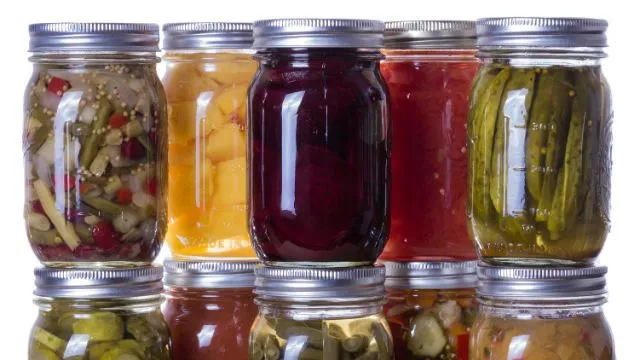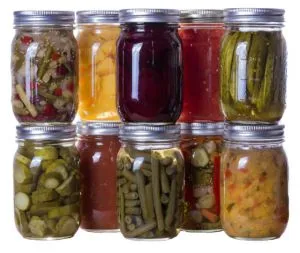
- Share on Facebook128
- Share on Pinterest
- Share on Twitter
If you ever had to depend on food that couldn’t be replaced in the event of a natural disaster, electrical grid failure or another major disruption in the food distribution system, what would you do?
If you don’t know how to keep your food in a way that it lasts longer without spoiling, you’d end up pretty hungry, or worse.
To be prepared just in case, get familiar with these three ways to preserve your food without utilizing a refrigerator.
Dehydration
Nearly everything can be dried, including many fruits and vegetables like tuberous and bulbous root vegetables, shelled beans, celery, peppers and fruits with low moisture content. Drying is the easiest and oldest food preservation method around.
Thousands of years ago, our ancestors learned that by removing moisture from food, they could concentrate natural salts and sugars so that the action of decay enzymes was slowed and bacteria and molds would not flourish.
When drying food, keep in mind that it must be dry through to the center, and that the thinner you slice the food, the faster it will dry and the better it will keep.
For this method of preservation, you’ll first need to prepare your food by either mashing it into a pulp, cutting it into small pieces, or stringing it up on a rope or thick string. Fruits like apricots and peaches can be preserved similar to the way you’ve probably seen them in store packages, like “leather.” You’ll first mash them into a pulp and spread the fruit out into a ¼” thick layer across a flat, clean surface, and then let it dry in the sun.
Dried vegetables aren’t all that tasty eaten out of hand, but once rehydrated, they add flavor, texture, and important nutrients to soups and stews. They’re also easy to store in air-tight containers. Just chop, cube or cut them in half, and spread them out one layer deep on screening or cheesecloth that’s stretched over a frame. Cover with additional screening or cheesecloth and place them out in the sun until dry.
Of course, you can also dry fish by hanging it and smoking it to keep the bugs off. It will generally last through an entire winter.
Canning
This method applies heat to food in a closed glass canning jar to stop natural spoilage and removes air from the jar to create a seal. There are two main methods that can be used. The first includes a water bath, which is best for high acid foods like tomatoes, salsas and pickles, as well as fruits and jams. The second is pressure canning, generally best for vegetables, meats, poultry and seafood.
Home canning isn’t difficult, but it is important to follow each step of the operation correctly, and at the proper time. You’ll need to be able to distinguish between various processing methods, as well as to be familiar with which procedure to use with a particular food. Fruits are the easiest to start out with, but no matter which type of foods you decide to can, you’ll want to invest in a good book on canning, such as the Ball Complete Book of Home Preserving.
Storing in a cool place
If you live in a cold climate area such as Canada, the whole outdoors can be your freezer in the wintertime, and often beyond that – you’ll just have to keep your food safe from wildlife. You can also use a cool root cellar to keep most root crop vegetables, like beets, potatoes, yams, turnips, and carrots, as well as some fruits, like apples, fresh. The most important factor in using a root cellar is to keep everything dry and cool.
 By using one or more of these methods now, you can be well-prepared should the worst happen or if you just like having a little extra food on hand.
By using one or more of these methods now, you can be well-prepared should the worst happen or if you just like having a little extra food on hand.
-The Alternative Daily
Sources:
http://www.freshpreserving.com/getting-started
http://www.motherearthnews.com/real-food/how-to-preserve-food-zm0z71zsie.aspx?PageId=4#axzz3704L14Ze
- Share on Facebook128
- Share on Pinterest
- Share on Twitter

